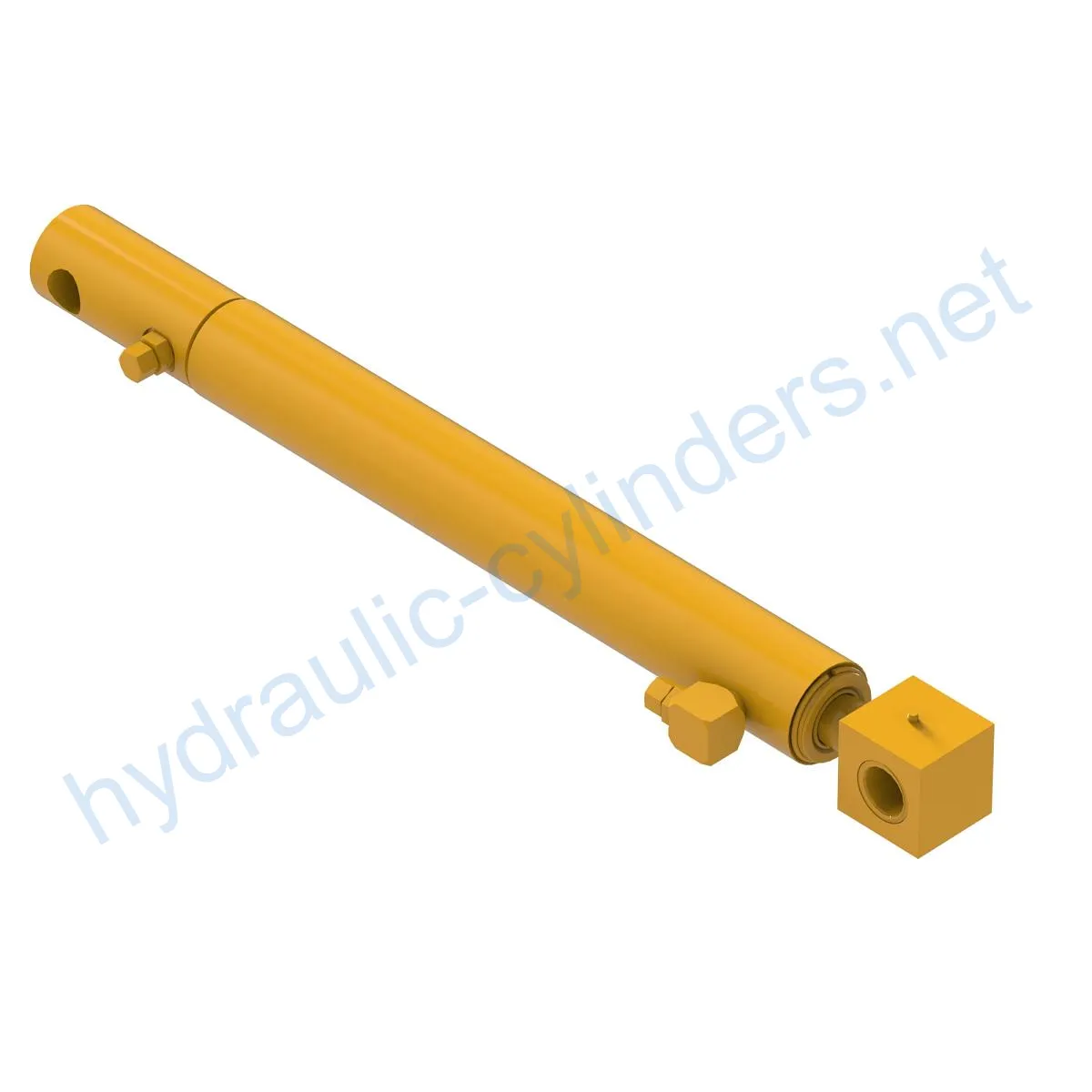Replacement Of AH224917 Bucket Hydraulic Cylinder
Yhtenä hydraulisylinterien valmistajista, toimittajista ja mekaanisten tuotteiden viejistä tarjoamme hydraulisylintereitä ja monia muita tuotteita.
Ota yhteyttä meihin saadaksesi lisätietoja.
Posti:sales@hydraulic-cylinders.net
Valmistaja toimittaja viejä hydraulisylinterit.
Replacement Of AH224917 Bucket Hydraulic Cylinder
This hydraulic cylinder is a replacement part for the 110 TLB model. It is designed to provide reliable performance and restore the normal operation of equipment. The cylinder weighs 27.94 lb and has dimensions of 2.5 in (height), 4 in (width), and 29.5 in (length).
Specifications and Model
Weight: 27.94 lb
Height: 2.5 in
Width: 4 in
Length: 29.5 in
Model: 110 TLB
Features
- Improved Equipment Performance: Replacing damaged or worn hydraulic cylinders can restore the equipment’s normal operation and ensure optimal performance in various applications.
- Enhanced Safety: Regularly replacing hydraulic cylinders reduces safety hazards associated with cylinder failures, ensuring the safety of operators and equipment.
- Overload Protection: New cylinder designs often incorporate better overload protection mechanisms, improving overall safety.
- Quick Installation: Modern hydraulic cylinders are designed for easy installation and replacement, minimizing downtime.
- Standardized Components: Many hydraulic cylinders are standardized products, making it easier to obtain replacement parts in the market.
Applications
This hydraulic cylinder is commonly used in various applications, including:
- Excavators: Replacing hydraulic cylinders on the arm or bucket of an excavator restores normal operation after long-term use or overloading.
- Cranes: The hydraulic cylinders in crane booms experience wear and tear during frequent lifting and lowering, requiring regular replacement to ensure safety.
- Tractors: Front-end loader hydraulic cylinders on tractors may develop leaks or decreased performance due to continuous lifting and tilting operations, necessitating replacement.
- Harvesters: Hydraulic cylinders in harvesters endure high pressure during harvesting, and timely replacement is crucial to maintain efficiency.
- Automated Production Lines: Hydraulic cylinders are used to control robotic arms and other automated equipment. Immediate replacement is necessary if cylinders fail to ensure uninterrupted production.
- Die Casting Machines: Hydraulic cylinders in die casting machines may experience decreased performance under high pressure and temperature conditions. Regular replacement ensures product quality.
- Mining Equipment: Hydraulic cylinders are used for lifting and moving heavy loads in mining equipment. Regular inspection and replacement are necessary to avoid equipment failures.
- Bulldozers: Wear on hydraulic cylinders in bulldozer blades can lead to reduced pushing capacity, requiring prompt replacement to maintain operational efficiency.
Maintenance Tasks
Regular maintenance tasks for the hydraulic cylinder include:
- Periodic inspections
- Proper lubrication
- Seal replacement
- Calibration checks
During installation, it is essential to provide proper alignment guidance, use suitable installation brackets to secure the cylinder, and follow recommended inspection, repair, and replacement procedures. We offer replacement parts and rebuilding services to extend the lifespan of your hydraulic cylinder.
Safety Considerations and Environmental Factors
When using hydraulic cylinders, it is crucial to prioritize safety measures. Proper handling and maintenance are necessary to ensure the safe operation of equipment and prevent accidents. Environmental factors, such as temperature and exposure to corrosive substances, can also impact the performance and lifespan of hydraulic cylinders.
Failure Diagnosis and Common Problems
Common failure scenarios and issues related to hydraulic cylinders include:
- Leakage: Hydraulic cylinders may develop leaks due to seal damage or wear and tear.
- Decreased Performance: Over time, hydraulic cylinders may experience a decrease in performance, affecting equipment efficiency.
- Seal Failure: Faulty seals can lead to leakage and reduced functionality of the hydraulic cylinder.
- Excessive Wear: High-pressure and high-load operations can cause significant wear on hydraulic cylinders.
For effective troubleshooting and problem-solving, it is important to provide tips and solutions for diagnosing and resolving these issues. Additionally, preventive measures can be suggested to minimize potential problems.

Design Considerations and Selection Criteria
When selecting hydraulic cylinders, important design considerations include load-bearing capacity, sealing effectiveness, durability, safety features, and ease of maintenance.
Sealing and Lubrication
Hydraulic cylinders utilize various sealing components, such as piston seals and rod seals, made of wear-resistant materials like polyurethane and nitrile rubber. The cylinder body and threaded ends undergo precision processing to enhance wear resistance. Regular lubrication with the appropriate hydraulic oil is necessary to ensure proper functioning.
Regular Inspections and Preventive Maintenance
Regular inspections and preventive maintenance play a crucial role in maintaining the performance and longevity of hydraulic cylinders. Proper installation, lubrication, and adjustment are essential. Providing alignment guidance during installation and recommending the use of appropriate installation brackets to secure the cylinder can help optimize its lifespan. We offer guidance on inspection, repair, and replacement procedures, as well as tips to extend the lifespan of hydraulic cylinders.
Product Installation Guide
Proper installation of hydraulic cylinders is vital for optimal performance and safety. Detailed guidelines for installation, including alignment, connection, and securing instructions, should be followed to ensure correct installation.
Maintenance Tasks
Regular maintenance tasks for hydraulic cylinders include:
- Periodic inspections
- Proper lubrication
- Seal replacement
- Calibration checks
Safety Considerations and Environmental Factors
When using hydraulic cylinders, safety measures should always be a top priority. Proper handling, maintenance, and adherence to safety guidelines are crucial to prevent accidents. Additionally, considering environmental factors, such as temperature and exposure to corrosive substances, can help optimize the performance and durability of hydraulic cylinders.
Failure Diagnosis and Common Problems
Common hydraulic cylinder failure scenarios and related issues include:
- Leakage: Hydraulic cylinders may develop leaks due to seal damage or wear.
- Decreased Performance: Over time, hydraulic cylinders may experience decreased performance, leading to reduced efficiency.
- Seal Failure: Faulty seals can result in leakage and diminished functionality.
- Excessive Wear: High-pressure and high-load operations can cause significant wear on hydraulic cylinders.
Providing troubleshooting tips and solutions can help readers effectively diagnose and resolve issues. Additionally, preventive measures can be suggested to minimize potential problems.

Tutustu VR-tehtaaseemme:
Tutustu VR-tehtaaseemme seuraavalla kierroksella
Hydraulisylinteri Sovellus:


